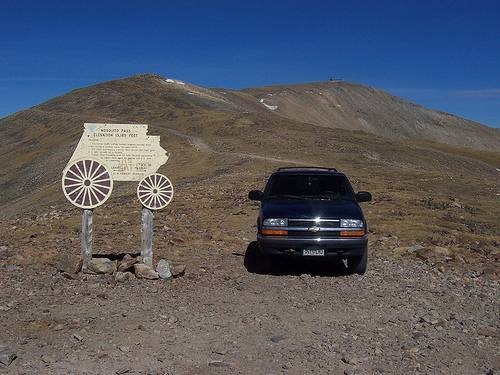
Hard starts and a loss of power can be a sign that your fuel pump is defective. Chevrolet S10 Blazers with fuel injection were designed with an electric pump mounted inside the gas tank. Removing and servicing the fuel pump is within the abilities of the home mechanic, but one must always take special precautions when working with gasoline.
Set the parking brake and block the front wheels of the vehicle.
Put the transmission in "park" (automatic transmissions) or "neutral" (manual transmissions).
Remove the fuel filler cap to release the pressure in the fuel tank.
Remove the fuel pump fuse from the fuse block located below the instrument panel and to the left of the steering column.
Disengage the three terminal connector at the fuel tank (later models only).
Start the engine. Allow it to run until all the fuel is drawn out of the fuel lines and the engine stalls out.
Turn the motor over (turn the key to start) for at least five seconds. This will remove all the pressure from the lines.
Disconnect the ground cable from the negative battery terminal.
Siphon all of the fuel out of the tank using a hand- or battery-operated fuel pump. Never use your mouth to siphon fuel out of a fuel tank.
Lift the rear of the vehicle and support it using jack stands.
Remove the retaining clamp and separate the fuel filler tube from the gas tank.
Label and remove any fuel tank lines from the sending unit.
Label and remove any accessible electrical connections from the sending unit.
Support the fuel tank with a floor jack or have an assistant hold it.
Remove the fuel tank support straps by removing the bolts that connect them to the vehicle's frame.
Slowly lower the tank, label and remove any electrical connections or fuel lines still connected to the sending unit as well as the ground wire. Do not allow the tank to hang on any of the wires or fuel lines.
Remove the fuel tank from the vehicle.
Remove the cam lock retaining ring. It is located on the top side of the tank around the sending unit. Use a hammer and brass drift to rotate the cam lock retaining ring until you can remove it from the tank.
Carefully pull the sending unit from the gas tank.
Slide the fuel pump up and pull it away from the lower support. Then slide it down to disengage it from the rubber connector.
Label and disconnect the electrical leads to the fuel pump.
Reconnect the electrical leads to the new fuel pump.
Push the fuel pump up onto the sending tube and then seat it in the lower support.
Install a new sending unit to gas tank gasket (O-ring) on the sending unit.
Carefully reinstall the sending unit back into the gas tank.
Reinstall the cam lock retaining ring. Drop it into position around the sending unit. Then use a hammer and brass drift to rotate the ring until it locks.
Raise the tank enough to reconnect the fuel lines and electrical connections you disconnected earlier. Use a floor jack or an assistant to support the tank.
Reconnect the fuel lines and electrical connections. Carefully follow the labels you made previously.
Carefully lift the tank into position. Be careful not to pinch any fuel lines or electrical wires.
Reinstall the fuel tank straps. Start, but do not tighten, the bolts that connect the tank straps to the frame.
Carefully examine the fuel lines and electrical wires. Make sure none will be pinched by the tank.
Tighten the bolts that connect the fuel tank straps to the frame.
Reconnect the fuel filler tube to the fuel tank and reinstall the retaining clamp.
Lower the vehicle.
Reinstall the fuel pump fuse and reconnect the three terminal connector at the tank (if disconnected).
Fill the fuel tank.
Reconnect the ground cable to the negative battery terminal.
Run the engine to test for proper fuel system operation.